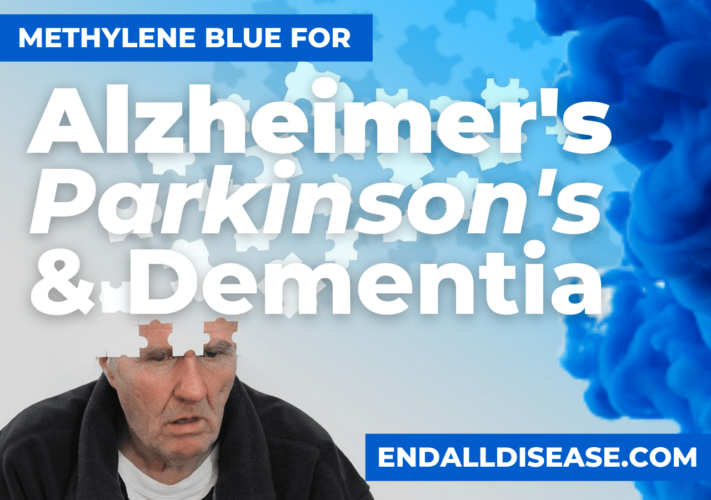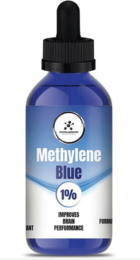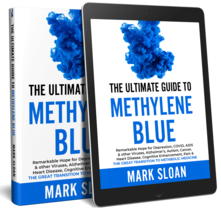The blockbuster drug methylene blue is experimentally proven to restore brain function in people with Alzheimer’s, Parkinson’s and other forms of dementia – but big pharma says you can’t have it!
Existing ‘approved’ drugs for dementia obviously don’t work or they would be curing people and the disease would vanish. But that doesn’t mean effective treatment’s don’t exist.
In this article you’re going to learn what’s happening in the brain of a person with dementia, and how the inexpensive drug methylene blue can help rejuvenate the aging brain. Methylene blue is so effective for dementia that some might even call it a cure.
What Causes Dementia?
Mainstream medicine admits they don’t know what causes brain disorders like Parkinson’s, Alzheimer’s and other forms of dementia.
For the past 50 years, mainstream medical theory has suggested that genetic defects are the cause, but millions of dollars spent on research have resulted in no effective treatments, let alone cures.
Modern medicine’s commitment to finding a genetic causation of dementia has blinded them to the trail of scientific evidence showing the true cause of the disease.
Let’s dust off that trail now and shine a spotlight on the evidence.
A groundbreaking study from 2017 reports that as the brain ages, mitochondrial metabolism decreases and that this phenomenon is possibly the main culprit behind many neurological diseases, including Alzheimer’s and Parkinson’s.[i]
What this means is that if your brain cells are metabolizing properly, dementia and other neurological diseases will not exist. All the criteria associated with a healthy brain – from memory retrieval speed, concentration, and focus – are dependent on adequate energy supply in the form of ATP (adenosine triphosphate).
As energy production (also known as the metabolic rate) within cells of the brain decline with age, so too does your ability to think, remember, and speak clearly.
Nitric Oxide Linked to Alzheimer’s, Parkinson’s and Dementia
One of the dominant factors responsible for the curbing of energy production with age is nitric oxide.
Doctors and nurses are taught in medical training that nitric oxide is a ‘miracle molecule’ of anti-aging, brain health, athletic performance and overall health. But this theory is being increasingly disproven by evidence mounting in recent decades.
Nitric oxide is not a miracle molecule; it’s a toxic free radical found in air pollution, and its causative role in dementia-related disorders like Alzheimer’s disease is becoming increasingly clear. For example, NO was found to accumulate around the plaques inside the brain of Alzheimer’s patients,[ii] and it’s been hypothesized that NO could be responsible for brain cell death found in Alzheimer’s and other forms of dementia.[iii] The deleterious effects of NO suggest that nitric oxide inhibitors, like methylene blue, could be remarkably effective for treating dementia.
One fascinating and useful attribute of methylene blue for treating brain disorders is that it accumulates in the brain, making it of particular interest for dementia and all kinds of brain-related disorders.
According to Dr. Raymond Peat, “nitric oxide poisons the ability to oxidize glucose into carbon dioxide, increases lactic acid, and the cell has less energy and is more excited by the acetylcholine, so basically it becomes susceptible to dying in proportion to the overstimulation of acetylcholine.”
But what does nitric oxide have to do with methylene blue? Methylene blue happens to be one of the most potent nitric oxide inhibitors known. It is a tool that can powerfully reduce NO synthesis and scavenge existing nitric oxide from the blood and body.
Methylene Blue and The Hallmarks of Alzheimer’s Disease
Scientists studying the brains of Alzheimer’s patients have noticed commonalities among patients, including abnormally shaped tau proteins, or “neurofibrillary tangles” within brain cells called neurons. Let’s look at the impact of methylene blue on these hallmarks and determine if it can help resolve them.
Hallmark 1: Neurofibrillary “Tangles”
The brains of mice that’ve been genetically engineered to lack tau protein do not function properly, leading researchers to conclude the misshapen tau proteins found in brain cells of Alzheimer’s patients play a role in the disease.
A group of scientists from Gakushuin University and Keio University School of Medicine in Japan published a study in 2019 that reports methylene blue can repair the problem by inhibiting the formation of tau neurofibrillary tangles in the brain.[xii]
Hallmark 2: Beta Amyloid Plaques
Another hallmark of the Alzheimer’s-diseased brain is the appearance of beta amyloid plaque surrounding brain cells. Remarkably, methylene blue has been shown to prevent beta amyloid plaques from forming on the outside of neurons.[xiii]
Evidence suggests that methylene blue can help resolve both of the primary hallmarks of Alzheimer’s disease. Not bad for a fabric dye!
But what about on actual Alzheimer’s patients outside the laboratory? Can methylene blue help actual patients with dementia?
Clinical Trial: Methylene Blue Boosts Brain of Dementia Patients
In a study on Alzheimer’s patients in 2019, scientists administered 8mg-16mg of methylene blue daily while monitoring their brain function. The methylene blue stopped Alzheimer’s disease dead in its tracks![x] [xi]
“Treatment with 8mg-16mg MB daily reduced cognitive decline by more than 85%! That is the perverted medical profession’s way of saying that MB effectively stopped AD in its tracks, or at least its cognitive symptoms, which is what this disease is all about. It is a type of dementia after all. Perhaps just as importantly, it found that drugs currently approved for managing symptoms of AD interfere with the therapeutic benefit of MB when administered together with it!”
– Georgi Dinkov
When a therapy stops cognitive decline by 85%, at what point do we say it cured the patient? I’m not going to make any claims here, but methylene blue is possibly as close to a cure as it gets.



